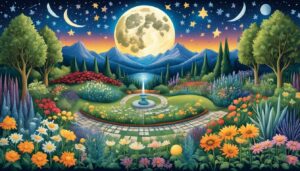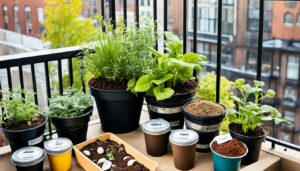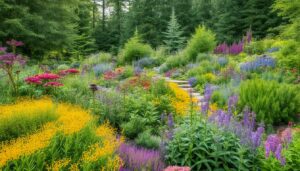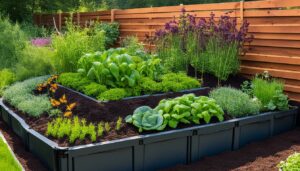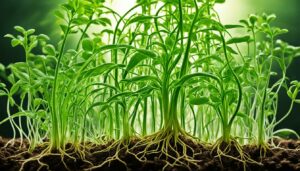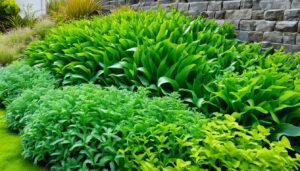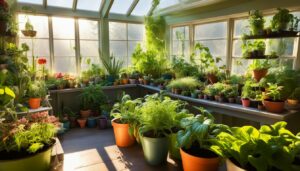Did you know that over 75% of the world’s flowering plants require a pollinator to reproduce? This staggering fact underlines the significance of pollinators in our ecosystems and the importance of gardens that cater to their needs. Establishing a Pollinator Garden is more than just a charming trend; it’s a critical move towards sustaining the biodiversity upon which we all depend. Whether you’re dreaming of a colorful Bee-Friendly Garden or a fluttering Butterfly Garden, creating a space that is attractive to pollinators is a simple yet powerful act you can take to support the environment.
Key Takeaways
- Integration of diverse native plants can make your garden irresistible to pollinators all year long.
- Planting for pollinators supports crucial biodiversity and food production.
- Attracting Pollinators such as bees and butterflies can be achieved in any sized space from urban to rural.
- Specialized plant selections, like milkweed for monarch caterpillars, significantly boost local populations.
- Conservation efforts can be as easy as maintaining seasonal foliage and avoiding pesticides.
- Creating habitats for nocturnal pollinators enriches the garden’s ecosystem.
Designing Your Bee-Friendly Garden
Embracing pollinator conservation is more crucial now than ever, with pollinators facing global declines due to habitat loss, pesticides, and other environmental pressures. As gardeners, we can play a pivotal role in bolstering these essential species by creating gardens that not only charm our senses but also offer a life-sustaining haven for pollinators. Crafting a bee-friendly garden is not simply an act of beauty; it’s a commitment to the health of our local ecosystems.
Importance of Pollinator Conservation
Pollinators are integral to the biodiversity of our planet, assisting in the reproduction of over 85% of the world’s flowering plants. Pollinator conservation efforts are key to maintaining healthy crops, ecosystems, and the natural food chain. By nurturing a garden designed for these creatures, we directly support ecological health and resilience.
Choosing Native Plants for Pollinators
Opting for native plants for pollinators can be the first step towards creating a diverse and thriving garden. Native plants have evolved alongside local pollinators, and therefore cater specifically to their needs. These plants typically require less water and fewer pesticides, reducing environmental impact while furnishing pollinators with the best nutrition and habitat options.
Integrating Perennial Blossoms for All Seasons
Perennial blossoms are the cornerstone of any bee-friendly garden, providing essential nectar and pollen through various seasons. Including perennials ensures a continuous buffet for bees, butterflies, and other pollinators, securing your garden as a year-round destination for these beneficial creatures.
Benefits of Diverse Plant Species
Incorporating a mix of plant species not only enhances the aesthetic appeal of a garden but is also vital for attracting a wide array of pollinators. With diverse plant species, each pollinator can find its preferred bloom, whether it be in shape, color, or size. A variety of flowering plants also ensures staggered blooming times, so at any given moment, there’s something in flower for pollinators to visit.
- Bottlebrush for its unique inflorescences that appeal to a variety of bee species.
- Shasta daisies for their classic flowers that serve as platforms for butterflies and hoverflies.
- Lavender for its irresistible scent and spikes of purple that are magnets for bees and butterflies alike.
- Coneflowers as durable perennials that consistently attract bees and other pollinators with their prominent seed heads.
The symbiotic relationship between plants and pollinators is undeniable, and through responsible gardening practices aimed at pollinator conservation, we can ensure that this delicate balance is upheld for generations to come.
Pollinator Garden
Embarking on the journey of Creating a Pollinator-Friendly Garden is a delightful venture that brings color and vitality to your outdoor space while contributing significantly to the conservation of local ecosystems. It’s not just about selecting Pollinator-Friendly Plants; it’s about creating a harmonious ecosystem that encourages these invaluable creatures to visit, feed, and nest in your garden — transforming it into a dynamic Pollinator Habitat where biodiversity can flourish.
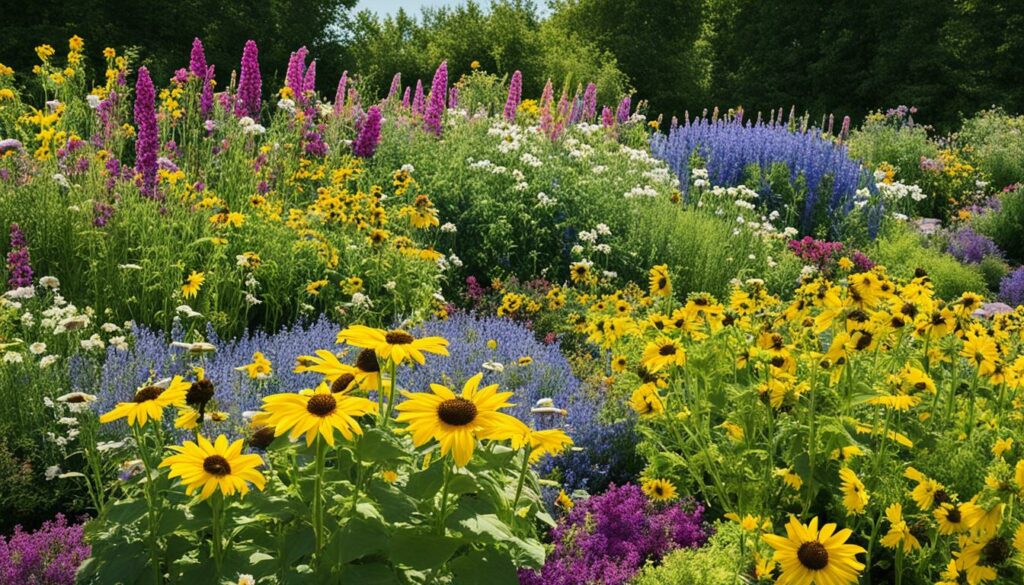
Consider crafting seed bombs as an initial step toward populating your garden with vibrant wildflowers. These small, spherical eco-gifts are composed of wildflower seeds, dirt, and clay, and establishing them throughout your garden area is as simple as scattering the bombs and letting them germinate. A natural patchwork of flourishing flora will emerge, providing both nourishment and shelter for various pollinators.
Furthermore, the utilization of recycled materials to create enchanting flower boxes showcases that even the most confined urban settings can become havens for pollinators. These repurposed containers not only augment the aesthetic appeal of your garden but also serve as innovative solutions for small spaces aspiring to partake in the creation of pollinator-friendly zones.
To cater to the nesting preferences of diverse bee species, incorporating structures crafted from untreated wood with drilled holes offers a rustic, safe haven for solitary bees. These simple yet effective habitats encourage bees to take up residence in your garden area, underscoring the role of thoughtful design in fostering a thriving Pollinator Habitat.
Moths, the nocturnal counterparts to butterflies, are equally essential in the pollination process. They can be attracted using a homemade nectar made from a blend of beer, brown sugar, and an overripe banana. When this concoction is applied to the bark of trees, it becomes an irresistible treat for these nighttime visitors, enhancing the biodiversity of your garden after dusk.
For the hummingbird enthusiasts, creating a hummingbird retreat is as simple as placing shallow water containers with distinct red accents by a comfortable perching location. This setting ensures that these tiny, vibrant birds have a space to bathe and hydrate, encouraging them to grace your garden with their iridescent presence.
In essence, these manifold initiatives are integral to Creating a Pollinator-Friendly Garden. They serve to nourish and protect a variety of pollinators while fostering environmental awareness and appreciation of the natural world. By engaging in such practices, we contribute to the larger goal of preserving pollinator populations, who play a pivotal role in the beauty and fertility of our planet’s ecosystems.
Conclusion
The commitment to creating and sustaining a year-round pollinator habitat is a choice that echoes the intrinsic value of biodiversity and environmental stewardship. It is not merely about cultivating a segment of horticultural beauty but about securing the foundation of our food chain and the health of natural ecosystems. Pollinator gardens function as critical sanctuaries that support the intricate life cycles of countless species, underpinning the fertility of our global flora.
Sustaining a Year-Round Pollinator Habitat
By developing a Pollinator-Friendly Garden, dedicated individuals take a proactive role in preserving these key contributors to our ecological wellbeing. Whether it’s through planting an array of native perennials or constructing habitats designed to shield them from the elements, these actions contribute to Sustaining Pollinator Habitats. This commitment supports both the flamboyant butterfly dancing between blossoms and the unseen nocturnal moths that play just as vital a role in pollination.
The Role of Pollinators in Our Ecosystem
The Role of Pollinators extends far beyond the enchanting flight from flower to flower; they are necessary actors in the reproductive processes that ensure the survival of plants and the continuation of food crops. Embracing such roles, each Pollinator Garden becomes a bulwark against the loss of biodiversity, fostering a balance that has sustained life across millennia. This delicate equilibrium depends on our collective actions to protect and cherish the tireless work of these pollinating protagonists, from the industrious bees to the humble beetles, for the benefit of present and future generations.


